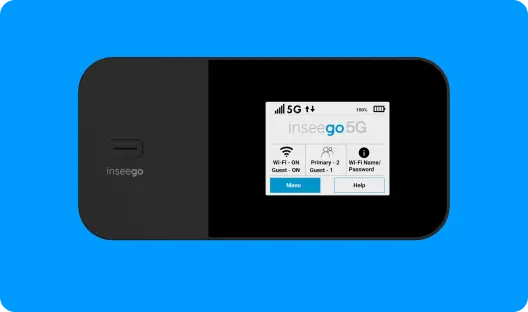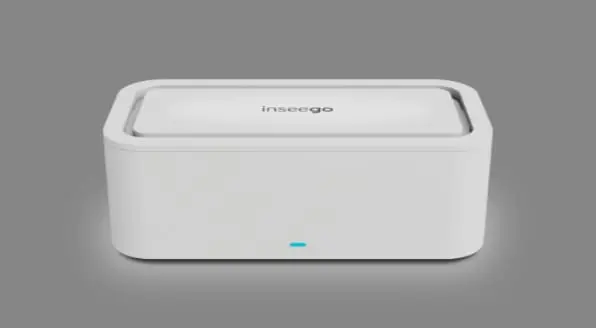Also in this category
View more in Connectivity for Remote NetworksConnectivity for Remote Networks
The Edge Cloud explained (and why it’s good for your business network)

You’ve heard of the cloud, but maybe not the edge cloud, or edge computing. If you understand the basic concept of the cloud then you’ll grasp the edge cloud without too much trouble.
What is the edge cloud?
The computing resources we used to go to cloud providers for, can now be accessed much closer to where we are with the edge cloud, the edge being the area in a network where internet-connected users, apps and devices are located.
This is possible using 5G connections and edge hardware — smart routers, switches and access points — that take care of data processing and storage that in the past would need to have been done by centralized servers (the cloud).
To illustrate, imagine a group of fast-food restaurants selling burgers. They get the raw ingredients from a central warehouse, and burgers are made at the restaurant as customer orders are received. The making of the burgers at the “edge” of the restaurant network is similar to what’s happening in the edge cloud data centers. The processing of the raw ingredients is happening closer to the end user.
This makes perfect sense for a burger chain — no customer is going to wait at the counter for three days for their burger to be delivered from the central warehouse — and it also offers similar benefits for network users.
Another way to think of it is a growing city. As suburbs are built around the city center it doesn’t make sense to force suburban residents to continue to drive downtown for their groceries; it’s more logical for them to shop in the suburbs.
In a similar way, instead of requiring all raw data to travel the full journey to central data servers in the cloud for processing, it is more efficient (and reduces overall network traffic) to process that data closer to the source (the edge of the network).
What benefits can edge cloud computing offer enterprise networks?
Modern enterprises are no longer confined to the four walls of a downtown office block. Work happens all over the country, and the world and terabytes of corporate data are flowing through a diverse range of network types, both private and public.
Modern businesses are not just becoming more location diverse; the types of data processed and the apps used are now more varied, have more functionality, and are often more resource hungry, requiring a business network to provide greater capacity, both in bandwidth and computing power.
The edge cloud is helping to ease the strain on the enterprise network by taking on some of the workloads these users and devices on the edge of the network are creating.
Easier Scalability — With the edge cloud it is now possible to grow your network quickly without having to upgrade your central network as the devices on the edge can deal with the increased demand. This combines with other benefits of the edge cloud such as reduced bandwidth and processing capacity.
Low Latency (Faster Response Times) — Applications that demand a lower latency (less lag) can now enjoy better response times with devices processing the data closer to the source. This is a common requirement in use cases such as automation in manufacturing, autonomous vehicles (self-driving cars), and retail operations, where data can be analyzed in real-time and feedback provided much quicker.
Improved Security — With more data being processed closer to the source, less sensitive data is being sent over public networks (or stored in a public cloud such as Amazon AWS or Microsoft Azure), meaning there is less chance of it being intercepted or hacked. Any data that is sent back to a centralized data center can be fully encrypted first, and edge devices can be hardened to make cyber-attacks more difficult.
Simplified Data Management — Data sent across public networks may need to meet specific rules and regulations (such as data anonymization, or privacy rules e.g. GDPR) but if the data is kept on the network edge this can be avoided, simplifying your data management.
Better Traffic Control — Smart edge devices can utilize logic rules to determine the best path for network traffic to take based on the data type, latency requirements, current congestion, and alternative routes.
Smarter Data Analytics — Data collected in real-time in edge locations, such as from IoT devices, can now be utilized almost instantly by algorithms and machine learning to make smarter decisions based on what is happening right now, and the current conditions in a specific area. For example, retail trends in local stores that could trigger timely marketing campaigns or restocking orders.
The edge cloud is still developing but demand will grow as the pressure on existing networks continues, and the Internet of Things (IoT) ecosystem becomes more widespread, with devices that require reduced latency and more powerful processing.
The future use cases of the edge cloud
While traditional network capacity will continue to grow to keep up with demand, the edge cloud will experience more of a boom as the benefits of processing more data on the edge is realized by companies, particularly in manufacturing, farming, retail, and smart cities and healthcare industries.
Some industries have already made significant advances in edge cloud technology, particularly in transport, where autonomous vehicles rely on fast processing and require greater processing power for a large throughput of incoming data.
Companies will find new ways to use edge data to make their businesses smarter and more efficient and manage their businesses in real-time.
Devices that were previously just “dumb” gateways for internet traffic will start to play a bigger role in driving artificial intelligence and making edge networks more powerful, more useful, and quicker for all users, without adding any significant load to larger public networks, third-party service providers or central cloud services.
As the ways that people and devices can connect to a corporate network multiply, MEC (Multi-access Edge Computing) is another technology that consolidates edge cloud and computing resources across a wide variety of network connections like CBRS, 5G, RAN, and legacy wired infrastructure to enhance existing networks.
The edge cloud won’t replace existing cloud networks. They work alongside the current cloud infrastructure and complement these networks by handling a lot more of the data processing, creating a hybrid cloud model that works a lot more efficiently than the current cloud architecture, making for a better user experience.
Next steps for implementing edge cloud
In conclusion, the edge cloud represents a transformative advancement in network architecture, enhancing scalability, security, and data management. By processing data closer to the source, it meets the growing demands of modern enterprises and resource-intensive applications like IoT and autonomous vehicles. As industries continue to innovate and integrate edge cloud technologies, businesses will experience smarter and more efficient operations.
To fully harness these capabilities and efficiently manage your network infrastructure, explore how Inseego Connect's cloud management solutions, plus our fixed wireless devices, can support your edge cloud strategies.
Visit our cloud management page to learn more









